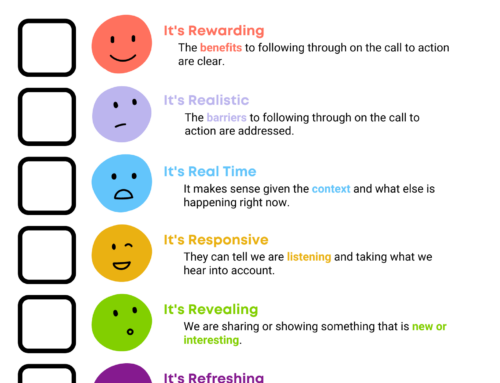
I often think back to the first adult book I ever bought, a 400+ pager titled ‘How the Mind Works’ by Steven Pinker. I’ve always been fascinated by the complexities of the mind and its influence on our behaviors. My college journey went on to start with a major in sociology – the study of human social behavior, a natural fit for someone intrigued by the mind and social society. Then, practicality kicked in (gotta pay those college loans!), and I found myself gravitating towards Communications, Media Studies, and yes – Marketing. Turns out, this was exactly where I needed to be.
As nonprofit marketers, we are constantly using the laws of psychology and sociology, sometimes without even realizing it. There’s a natural synergy that can be found in the compelling stories we tell, or the urgency we create in our campaigns. They are actually very integral to our toolkits and harnessing them can help us really enhance our impact.
“The purpose of psychology is to give us a completely different idea of the things we know best.” – Paul Valéry
Let’s dig into a few examples of how the disciplines tie in well. Storytelling, authority, scarcity, reciprocity, and framing, to name a few, are strong psychological concepts. But they are also strong marketing tools.
Take storytelling, for instance. As humans we’re naturally drawn to stories – they engage our emotions and leave lasting impressions. Sharing real-life tales of those we’ve helped creates a bond with our audience that’s hard to break.
Authority is also key. People inherently respect and follow experts. By showcasing our team’s knowledge and experience, we enhance our credibility and draw more people to our cause.
Then there’s scarcity, or as some of us know it, FOMO (Fear Of Missing Out). It’s a basic human instinct to fear missing out. When we say, “Time’s running out to make a difference,” we’re tapping into that instinct.
Next up is reciprocity. Reciprocity is about mutual exchange. It’s a simple yet powerful concept: when we receive something, we feel compelled to give something back (hello nickel in the donation envelope technique). When we acknowledge donations, no matter the size, we encourage a cycle of generosity. This not only fosters ongoing support but also strengthens the sense of community among our supporters.
And framing – this is all about how we present our message. In psychology, framing is about the context and presentation of information, influencing how it’s perceived and processed. The way we frame our communication to our stakeholders can deeply influence how it’s received. For example, in our work, you might frame a donation request as an opportunity to join a community of change-makers, emphasizing the collective impact rather than just a financial contribution.
Keep these techniques in mind and try applying one in your next project or campaign. It could significantly alter the outcome or, at the very least, positively impact how your message is received.
You’ll also find that these techniques don’t just extend our reach; they deepen our connections.
Try This
Here are five activities or ideas you’re probably already using, or could easily incorporate, leveraging psychology in your marketing:
- Regularly share well-crafted stories of participants or donors on social media to foster community connections.
- Create a ‘Thank You’ video series featuring stories from beneficiaries, encouraging a cycle of giving (reciprocity).
- Host monthly webinars with subject matter experts to boost your organization’s credibility.
- Launch urgent time-limited fundraising campaigns to tap into the scarcity effect.
- Develop messaging that frames your cause in alignment with your audience’s values to really make it resonate.
Over the years, it’s become super clear how deeply intertwined marketing, psychology, and sociology are. They’re not just academic disciplines; they’re practical tools that shape how we communicate and connect. Keeping this in mind has been handy for me, and it will be for you too.
Read These
If you’re eager to explore further, I highly recommend these reads – ‘Nudge’ and ‘Made to Stick’ are personal favorites. And if you have recommendations, drop them in the comments!
- Contagious: How to Build Word of Mouth in the Digital Age by Jonah Berger
- Influence: The Psychology of Persuasion by Robert Cialdini
- Made to Stick: Why Some Ideas Survive and Others Die by Chip and Dan Heath
- Predictably Irrational: The Hidden Forces That Shape Our Decisions by Dan Ariely
- Nudge: Improving Decisions About Health, Wealth, and Happiness by Richard H. Thaler and Cass R. Sunstein
Here’s to making every word and every campaign count!






